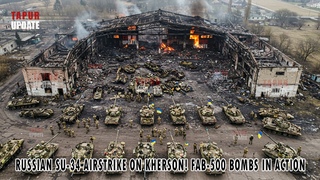How are holograms possible? | Optics puzzles 5
3d scenes on 2d film, and a diffraction lesson along the way.
Instead of sponsored ad reads, these lessons are funded directly by viewers:
An equally valuable form of support is to share the videos.
Hologram credits:
The Microscope is by Walter Spierings, 1984
Donations Hologram by Cherry Optical Holography
Lucy in a Tin Hat is by Patrick Keown Boyd, 1988
The Star Wars-themed Direct-Write Digital Holograms were produced by Zebra Imaging.
The ’Shakespeare’ embossed animated integral hologram was made by Applied Holographics.
Walter Spierings, who did the microscope, is from Dutch Holographic Laboratory. He wanted me to let you know that anyone should feel free to approach them when it comes to producing holograms, they do a lot of innovative things with the medium:
Thanks to everyone who helped with this project:
Paul Dancstep, for help writing, and for all the 3d modeling
Craig Newswanger and Sally Weber, for making the central hologram shown
Kurt Bruns, for the artwork of Dennis Gabor
Phoebe Tooke, Wayne Grim, and Rick Danielson, for filming at the exploratorium
Quinn Brodsky and Mithuna Yoganathan, for footage of lasers through diffraction gratings
Vince Rubinetti, for writing the music
Cliff Stoll for the Klein Bottle
Small correction: After the algebra in the end, I say “We don’t even make assumptions about R“, but that’s not quite true. To treat |R^2| as some scaling factor in the expression |R^2| * O, it matters that the amplitude of R is approximately constant around a given point.
Gabor’s Nobel Prize lecture:
A few resources we found helpful for this video
Seeing the Light, by Falk, Brill, and Stork
Practical Holography, by Saxby and Zarcharovas
Principles of Holography by Howard Smith
Timestamps
0:00 - What is a Hologram?
3:28 - The recording process
11:45 - The simplest hologram
17:12 - Diffraction gratings
25:15 - Reconstructing the simplest hologram
28:24 - Conjugate image
31:11 - More complex scenes
35:58 - The bigger picture of holography
38:27 - The formal explanation
SEV1:
------------------
These animations are largely made using a custom Python library, manim. See the FAQ comments here:
#manim
All code for specific videos is visible here:
The music is by Vincent Rubinetti.
------------------
3blue1brown is a channel about animating math, in all senses of the word animate. If you’re reading the bottom of a video description, I’m guessing you’re more interested than the average viewer in lessons here. It would mean a lot to me if you chose to stay up to date on new ones, either by subscribing here on YouTube or otherwise following on whichever platform below you check most regularly.
Mailing list:
Twitter:
Instagram:
Reddit:
Facebook:
Patreon:
Website:























